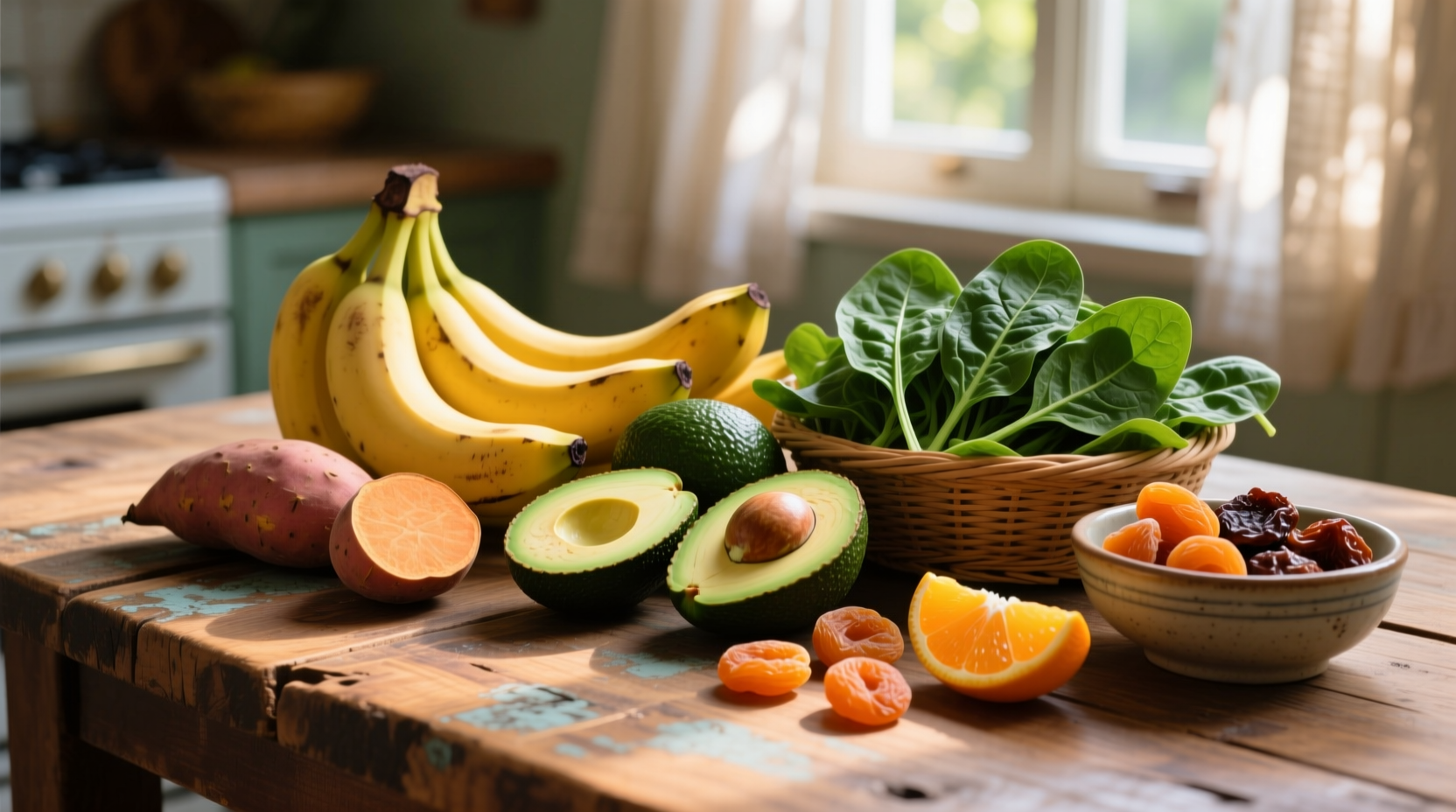Understanding which foods contain potassium is essential for maintaining optimal health. Potassium ranks as the ninth most abundant element in the human body and serves as a critical electrolyte that regulates fluid balance, nerve signals, and muscle contractions. Most adults need between 2,600-3,400mg daily, yet nearly 98% of Americans fail to meet this requirement according to National Health and Nutrition Examination Survey data.
Why Potassium Matters for Your Health
Potassium works in tandem with sodium to maintain proper cellular function. Research from the American Heart Association shows diets rich in potassium can lower systolic blood pressure by 4-5 mm Hg in individuals with hypertension. This mineral also supports:
- Muscle contraction and nerve transmission
- Cardiovascular health through blood pressure regulation
- Bone mineral density preservation
- Kidney stone prevention
Deficiency symptoms often include muscle cramps, fatigue, and irregular heartbeat. Certain populations require special attention to potassium intake, including athletes, individuals taking diuretics, and those with gastrointestinal disorders affecting nutrient absorption.
Top Potassium Food Sources by Category
Fruits Packed with Potassium
While bananas often steal the spotlight, several fruits provide even higher potassium concentrations per serving:
- Avocado (1 cup, cubed): 705mg (15% DV) - Also rich in heart-healthy monounsaturated fats
- Cantaloupe (1 cup): 473mg (10% DV) - Contains vitamin A and hydration benefits
- Orange juice (1 cup): 496mg (11% DV) - Choose pulp-free varieties for kidney patients
- Banana (medium): 422mg (9% DV) - Portable and versatile for smoothies or snacks
Vegetables with Highest Potassium Content
Cooking methods significantly impact potassium retention. Steaming preserves more nutrients than boiling, which can leach potassium into water.
- Sweet potato (1 medium, baked): 542mg (12% DV) - Also provides 400% of daily vitamin A needs
- Spinach (1 cup cooked): 839mg (18% DV) - Contains iron and vitamin K
- Beet greens (1 cup cooked): 1,309mg (28% DV) - Often discarded but nutritionally superior to roots
- White mushrooms (1 cup sliced): 305mg (7% DV) - Contains selenium and B vitamins
| Food | Portion | Potassium (mg) | % Daily Value |
|---|---|---|---|
| Beet greens (cooked) | 1 cup | 1,309 | 28% |
| White beans (canned) | 1 cup | 1,189 | 25% |
| Spinach (cooked) | 1 cup | 839 | 18% |
| Avocado | 1 cup | 705 | 15% |
| Sweet potato | 1 medium | 542 | 12% |
| Salmon (baked) | 3 oz | 534 | 11% |
Practical Ways to Boost Potassium Intake Daily
Incorporating potassium-rich foods doesn't require drastic dietary changes. Try these simple strategies:
Morning Potassium Boosters
Start your day with potassium-rich options that pair well with common breakfast foods:
- Add sliced banana to oatmeal or cereal (422mg)
- Blend spinach into morning smoothies (650mg per cup)
- Top whole grain toast with avocado (350mg per half)
- Choose tomato juice instead of orange juice (500mg per cup)
Lunch and Dinner Solutions
Transform standard meals into potassium powerhouses with these modifications:
- Replace rice with quinoa or white beans in salads (500-1200mg)
- Use sweet potato instead of regular potato in recipes
- Add mushrooms to sauces and gravies for umami flavor
- Include leafy greens in every dinner plate (kale, spinach, Swiss chard)

Important Considerations for Specific Health Conditions
While potassium benefits most people, certain health conditions require careful monitoring. The National Kidney Foundation emphasizes that individuals with chronic kidney disease often need to restrict potassium intake, as impaired kidneys cannot effectively remove excess potassium from the bloodstream.
Those taking ACE inhibitors or potassium-sparing diuretics should consult their healthcare provider before significantly increasing potassium intake. For athletes and active individuals, potassium becomes especially crucial for preventing muscle cramps and supporting hydration.
The USDA's FoodData Central database shows that cooking methods dramatically affect potassium content. Boiling vegetables can reduce potassium by 50-70% as the mineral leaches into water, while steaming preserves up to 90% of this valuable nutrient.
Meeting Daily Potassium Requirements Through Diet
Reaching the recommended 2,600-3,400mg daily target is achievable with strategic food choices. A sample day might include:
- Breakfast: Oatmeal with banana and almonds (650mg)
- Lunch: Spinach salad with avocado, white beans, and salmon (1,400mg)
- Snack: Baked sweet potato with Greek yogurt (700mg)
- Dinner: Stir-fried tofu with mushrooms and broccoli (600mg)
This balanced approach totals approximately 3,350mg of potassium while providing diverse nutrients. Remember that processing and canning can reduce potassium content, so fresh or frozen options typically offer higher concentrations.
Frequently Asked Questions
Here are answers to common questions about potassium-rich foods:











 浙公网安备
33010002000092号
浙公网安备
33010002000092号 浙B2-20120091-4
浙B2-20120091-4